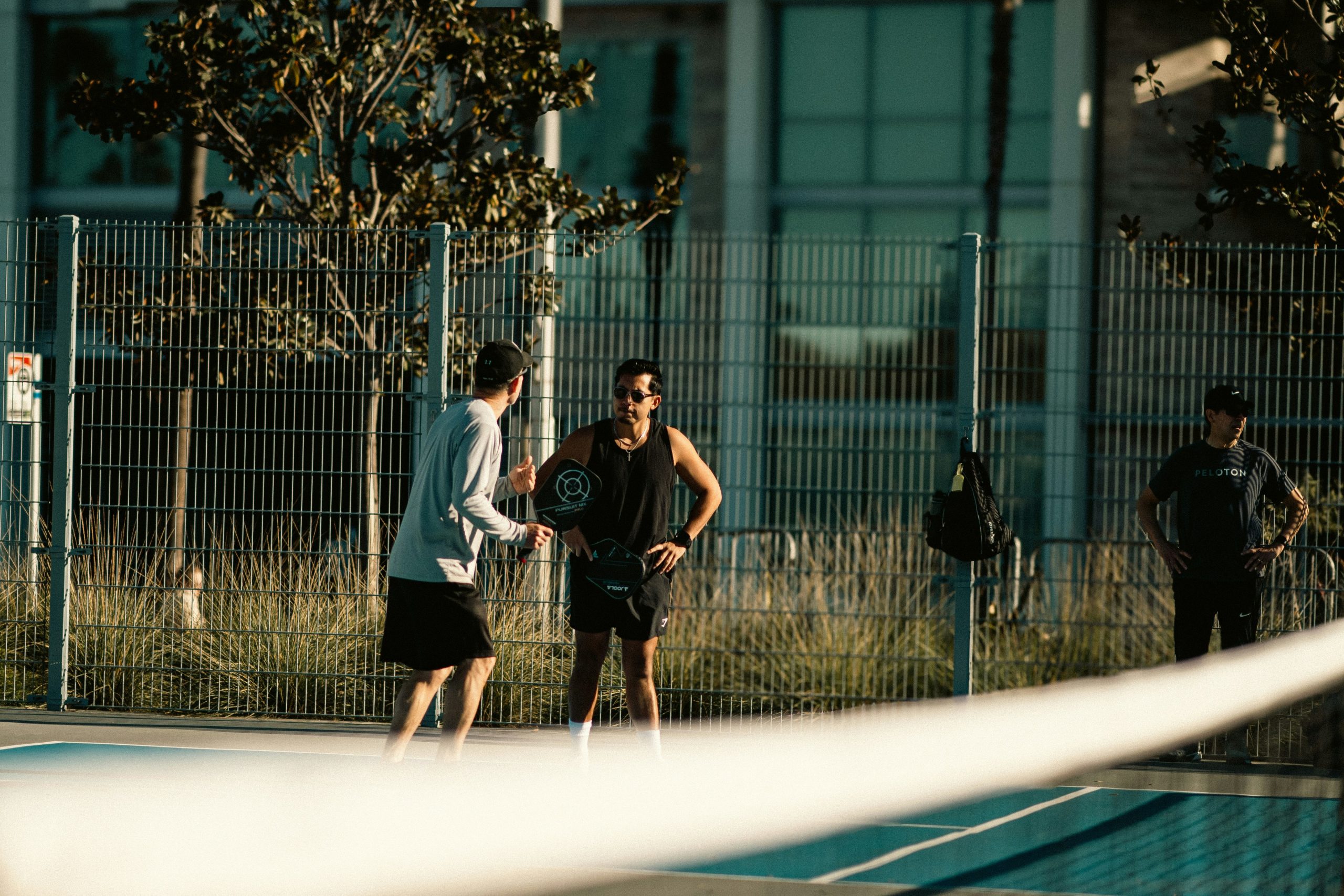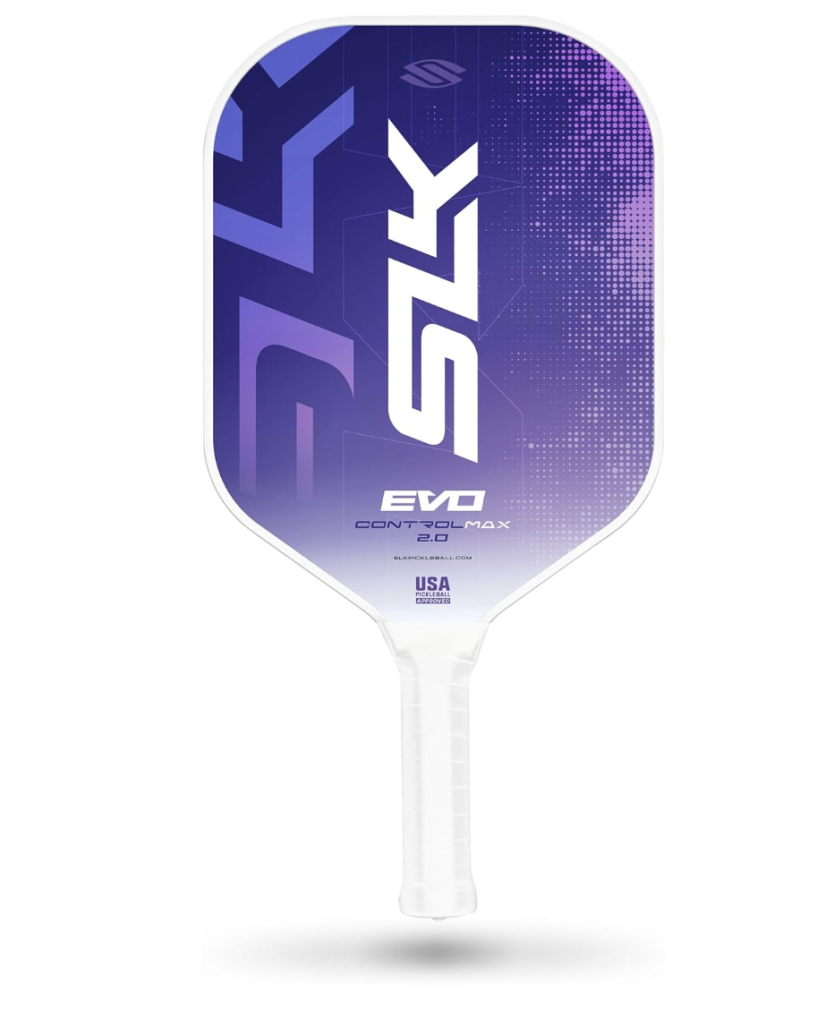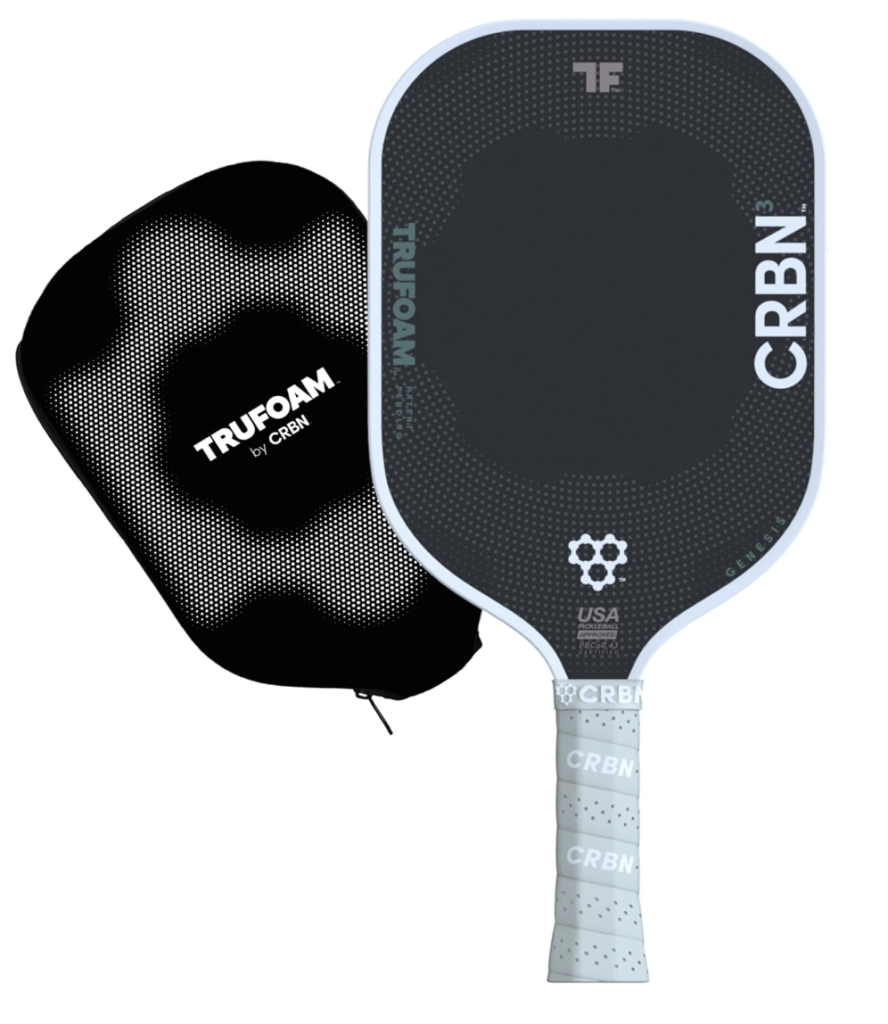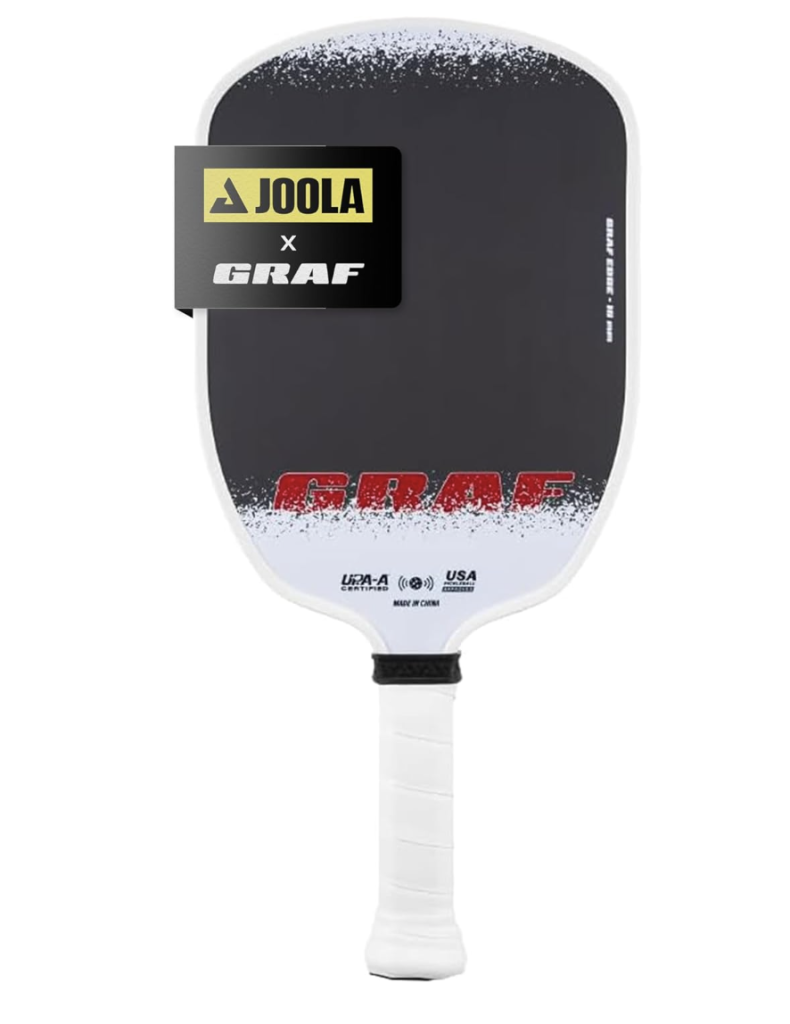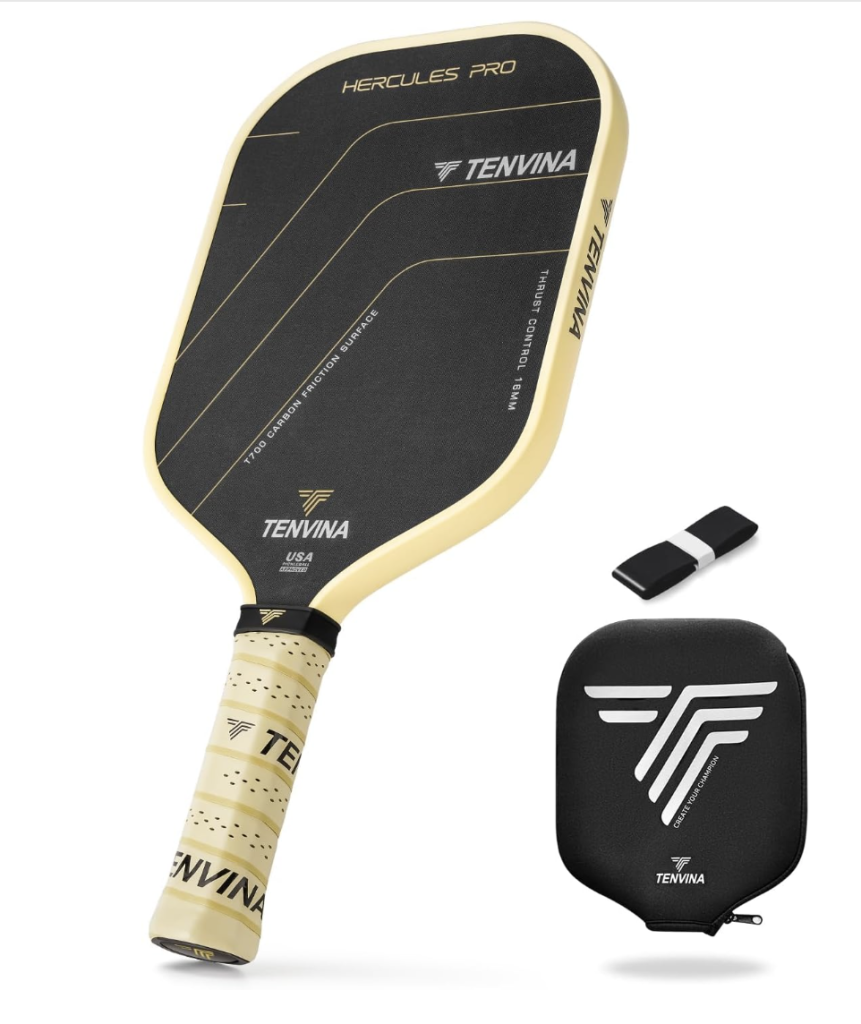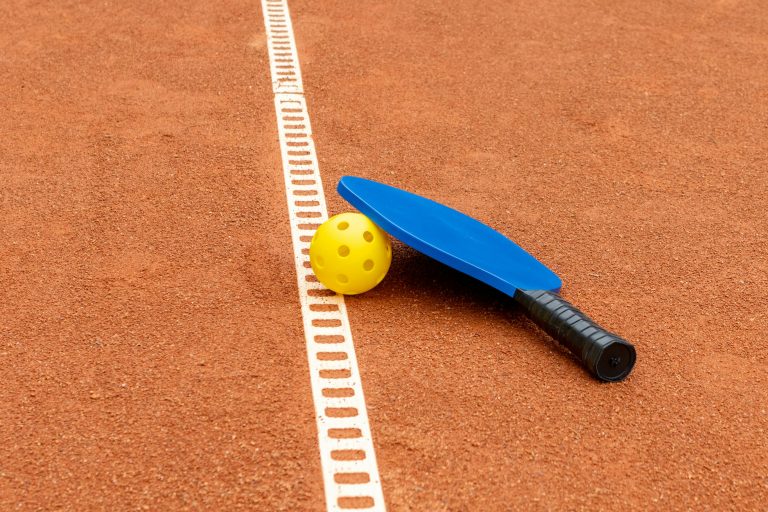Best Pickleball Paddles for Joint Pain Relief — Lightweight, Vibration Free, and Easy to Swing
Updated October 2025
If you love pickleball but struggle with joint pain, you’re not alone. Finding the right paddle can make a huge difference in your comfort and performance. Some paddles are designed specifically to reduce strain on your joints, helping you enjoy the game without the discomfort.
So, what are the best options out there? Let’s explore five top paddles that could make your time on the court more enjoyable and pain free.
Selkirk Sport SLK Evo Pickleball Paddles
If you’re just starting out in pickleball or looking for a paddle that eases joint pain, the Selkirk Sport SLK Evo Pickleball Paddle might be your new best friend! These paddles come in three models Evo Power, Evo Control, and Evo Hybrid, made from lightweight fiberglass or carbon fiber. Their unique SpinFlex surface and SLK Rev-Control core help you gain control and spin, making your shots more precise. Plus, the ultra-comfort grip reduces sweat and impact, so you can play longer without discomfort. Just remember to evaluate durability and maybe grab a paddle cover for extra protection!
Best For: Beginners or lower end intermediate players looking for a comfortable paddle that enhances control and touch.
Pros:
- Excellent spin and control thanks to the SpinFlex surface and SLK Rev Control core.
- Lightweight design reduces fatigue during extended gameplay.
- Ultra comfort grip absorbs sweat and impacts, enhancing overall comfort.
Cons:
- Durability concerns reported by some users, with damage occurring after limited use.
- May not meet the needs of players seeking high power in their shots.
- Recommended to purchase a paddle cover for added protection due to potential delivery damage.
CRBN TruFoam Genesis Pickleball Paddle
The CRBN TruFoam Genesis Pickleball Paddle is a game changer for players looking to relieve joint pain while still enjoying competitive play. This innovative paddle features a 100% foam core, making it the first of its kind. With unmatched durability, it performs at its best right from day one, so you won’t have to worry about break-in periods. Its design helps optimize spin and power, giving you more control and touch on the court. Weighing just 0.33 kilograms and with a comfortable grip, it’s perfect for players of all skill levels. Plus, it comes with a neoprene cover for protection!
Best For: Players of all skill levels seeking a durable and high performance pickleball paddle that enhances control and reduces joint pain.
Pros:
- Unmatched Durability: The foam core eliminates core crush and offers consistent performance from day one.
- Optimized Spin and Power: Engineered to replicate tennis racket dynamics, enhancing dwell time and flex for better play.
- Lightweight and Comfortable: Weighs only 0.33 kilograms with a comfortable grip size, making it easy to handle for extended play.
Cons:
- Minor Grip Issues: Some customers reported damaged grips upon arrival.
- Premium Price Point: As an innovative product, it may be priced higher than traditional paddles.
- Limited Color Options: Available only in black, which may not appeal to all aesthetic preferences.
JOOLA GRAF Edge 16mm Pickleball Paddle
Looking for a paddle that combines power, control, and comfort? The JOOLA GRAF Edge 16mm Pickleball Paddle is your answer! Designed for players of all skill levels, this paddle features a carbon fiber surface and a honeycomb core, making it super durable and responsive. With an expanded sweet spot inspired by tennis legends like Andre Agassi, you’ll enjoy better control and spin. Weighing in at just 7.8 ounces, it’s easy to handle. Plus, you can access exclusive content through its NFC chip. Whether you’re playing casually or competitively, this paddle is a great choice for everyone!
Best For: The JOOLA GRAF Edge 16mm Pickleball Paddle is best for players of all skill levels looking for a paddle that offers a balance of power, control, and comfort.
Pros:
- Durable carbon fiber construction with a honeycomb core enhances responsiveness and longevity.
- Expanded sweet spot provides better control and increased spin for improved gameplay.
- NFC chip enables easy access to exclusive content and 12 month warranty via JOOLA Connect App.
Cons:
- At 7.8 oz, some players may prefer a lighter paddle for quicker maneuverability.
- Limited to players under a 4.0 skill level may not appeal to advanced competitors seeking high-performance options.
- The textured surface may require adjustment for players used to traditional paddles.
TENVINA Professional Thermoformed Pickleball Paddle
For players seeking relief from joint pain while still enjoying the thrill of pickleball, the TENVINA Professional Thermoformed Pickleball Paddle stands out as a top choice. This paddle features a unique 4-layer carbon fiber surface, which not only enhances your game but also reduces stress on your joints. The polymer honeycomb core gives you an amazing feel and control, making every shot a delight. With its lightweight design and customizable grip, you’ll find it easy to maneuver. Plus, it’s USAPA approved, so you know it’s a trusted option. Get ready to elevate your pickleball experience!
Best For: Players seeking a lightweight, high-performance pickleball paddle that minimizes joint stress while maximizing control and power.
Pros:
- Exceptional power and control thanks to the 4 layer carbon fiber construction and polymer honeycomb core.
- Customizable grip lengths for enhanced comfort and maneuverability, catering to different playing styles.
- USAPA approved, ensuring it meets professional standards for competitive play.
Cons:
- Lightweight design may not provide enough stability for players who prefer heavier paddles.
- Higher price point compared to some entry-level paddles, which may not suit all budgets.
- Elongated and wider paddle options may require adjustment for players used to traditional shapes.
Factors to Consider When Choosing a Pickleball Paddle for Joint Pain
When you’re picking a paddle to help with joint pain, several factors come into play. You’ll want to think about the weight and balance of the paddle, as well as how comfortable the grip feels in your hand. Plus, materials and paddle shape can really make a difference, so let’s explore what features might work best for you!
Weight and Balance
Choosing the right pickleball paddle can feel like an intimidating task, especially if you’re dealing with joint pain. One of the most important factors is the weight. Lighter paddles, typically between 6 to 8 ounces, can reduce fatigue and make it easier on your joints during long games. Balance is another key element; paddles that are evenly balanced or slightly head-light help you swing with less effort, which is a big win for achy joints. Plus, a thicker core paddle offers better shock absorption, lessening stress on your arms and wrists. When shopping, look for lightweight materials and ergonomic designs that boost comfort. These features can really help you enjoy the game without the extra strain!
Grip Comfort
Grip comfort is a game-changer for pickleball players, especially those dealing with joint pain. A grip size around 4 to 4.25 inches can really help reduce strain on your wrist and hand, making a big difference during play. Look for paddles with ultra comfort grips that absorb sweat and impacts, keeping you comfy while you play. Softer, cushioned grips are also great for shock absorption, which is a bonus if you’re feeling joint pain. Don’t forget about grip length; a longer grip gives you better control and lets you switch hand positions, helping to ease discomfort. And remember, regularly replacing worn grips can keep your paddle feeling fresh and supportive, so you can focus on your game!
Material Flexibility
Finding the right pickleball paddle isn’t just about grip comfort; material flexibility plays a big role too. The flexibility of your paddle can make a huge difference in shock absorption, helping to ease joint pain during play. Paddles made from softer materials, like certain polymers or specially designed composites, offer a more forgiving feel, which can reduce strain on your joints. Look for paddles with polymer cores, as they provide better cushioning. If you have joint pain, consider a paddle with a thicker core; it enhances softness and lessens the harshness of ball contact. Also, the construction technique, like layering or thermoforming, impacts how well your paddle absorbs impacts, boosting your comfort during those long games.
Paddle Shape
When you’re looking for a pickleball paddle that eases joint pain, the shape of the paddle really matters. A wider paddle often gives you a larger sweet spot, so you don’t have to hit perfectly every time, which can help reduce strain on your joints. On the other hand, elongated paddles might give you more reach, but they can also make your wrist work harder, possibly making pain worse. You’ll want a paddle with balanced weight distribution, too, as it can ease control and lessen stress on your arm. Don’t forget about grip length and thickness; an ergonomic grip can reduce wrist tension, while thicker paddles usually offer better shock absorption, perfect for minimizing discomfort during play!
Core Construction
Choosing the right pickleball paddle goes beyond just its shape; the core construction plays a big role in how comfortable you’ll feel during play. Paddles with polymer or foam cores are great options since they provide a softer feel and better vibration dampening. This can make a big difference if you struggle with joint pain. A thicker core not only gives you a larger sweet spot but also enhances control, so you won’t have to use excessive force. Plus, lighter paddles help reduce fatigue, keeping your arms and joints happy. When you select a paddle designed for power and control, you can hit the ball effectively with less strain, making your game more enjoyable and pain-free!
Shock Absorption
Shock absorption is one of the most important factors to evaluate when picking out a pickleball paddle, especially if you’ve got joint pain. A paddle with a thicker core made from materials like polymer or foam can really help reduce the impact on your joints during play. You’ll want to find one with a comfortable grip, too, since a good grip can soak up sweat and lessen strain on your wrist and elbow. Look for a wider sweet spot, which spreads out the force when you hit the ball, making it gentler on your joints. Also, consider the paddle’s weight; lighter paddles can help reduce arm fatigue, while heavier ones might add to the impact. Happy playing!
Playing Style Adaptability
Finding the right pickleball paddle isn’t just about picking the fanciest one; it’s about matching it to your playing style and how your body feels during the game. Start with a lightweight paddle, around 7.5-8.5 oz, to ease joint strain during long matches. Look for one with a larger sweet spot for better control and more forgiving shots. Paddles featuring a softer polymer core or foam technology can really help absorb shocks, reducing vibrations when you hit the ball. Don’t forget about the grip! An ultra-comfort grip soaks up sweat and impact, keeping your hands comfy. Finally, choose a paddle shape that suits you, wider for stability, elongated for quick movements.
Final Thoughts
Choosing the right pickleball paddle can really make a difference if you’re dealing with joint pain. Paddles like the Selkirk Sport SLK Evo and CRBN TruFoam Genesis stand out for their lightweight designs and comfort. Whether you’re after shock absorption or a larger sweet spot, there’s a paddle here for you. Remember, it’s all about finding what feels best in your hands. So grab one of these paddles, hit the court, and let the fun begin!
FAQ: Best Pickleball Paddles for Joint Pain Relief
What makes a pickleball paddle good for joint pain?
Lighter overall weight, a thicker polymer or foam core, and a cushioned grip reduce shock and strain. A larger sweet spot also limits harsh vibrations on mishits.
Are thicker paddles better for elbow and wrist pain?
Often yes. A 16 mm core tends to absorb impact better than 13 mm, which can feel crisp but transfers more feedback to the arm.
What grip size is best if I have joint pain?
Use a grip that enables a relaxed hold. Many players with joint pain prefer 4.25 to 4.5 inches plus a soft overgrip for extra cushioning and moisture control.
Is carbon fiber better than fiberglass for joint comfort?
Carbon faces usually feel more controlled and damped, while fiberglass is poppier. If pain is your priority, carbon or foam-forward builds are safer bets.
How light should a paddle be for joint pain relief?
Most players find comfort in the 7.4 to 8.0 oz range. Very light paddles can increase swing speed and accidental torque, so balance matters more than chasing the lowest number.
Do vibration reducing gloves or elbow sleeves help?
Yes. A padded glove and a medical-grade elbow sleeve can cut peak shock and let you keep a looser grip, which lowers forearm tension.
Can lead tape worsen joint pain?
It can if placed only at 12 o’clock and the paddle becomes too head heavy. If you add weight, try small amounts at 3 and 9 o’clock to boost stability without stressing the wrist.
How do I know if my current paddle is causing pain?
Common red flags are forearm tightness after short sessions, sting on off-center hits, and discomfort during blocks. Test a thicker-core demo or add an overgrip for a quick comparison.
Are there USAP approved paddles designed for comfort?
Yes. Many low vibration, control-leaning models from major brands carry USAP approval. Check the listing or the brand’s site to confirm before a tournament.
What routine changes help alongside a comfort paddle?
Warm up the forearm and rotator cuff, keep a neutral wrist, relax your grip pressure, and drill resets and dinks instead of constant swinging for pace.

